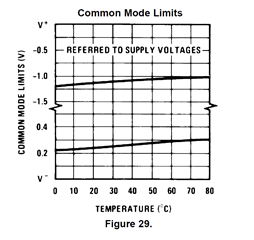Other Parts Discussed in Thread: LM311, TLV1812-Q1
Hello guys,
One of my customers is considering using LM311M(X)/NOPB.
They have the following questions. Could you please tell me your reply?
Q1. What is LM311-N minimum operation voltage (voltage between V+ and -V- terminals)?
We couldn't find the voltage spec.
Is it 5V in single supply use and is it +/-2.5V in dual supply use?
Q2. What is LM311-N recommended operation voltage range of power supply (voltage range between V+ and -V-)?
Is it 5V~30V in case of single supply and is it +/-2.5V~+/-15V in dual supply case?
Your reply would be much appreciated.
Best regards,
Kazuya.




